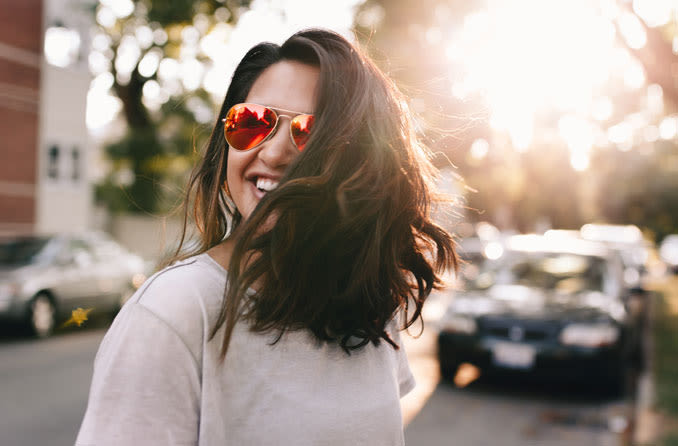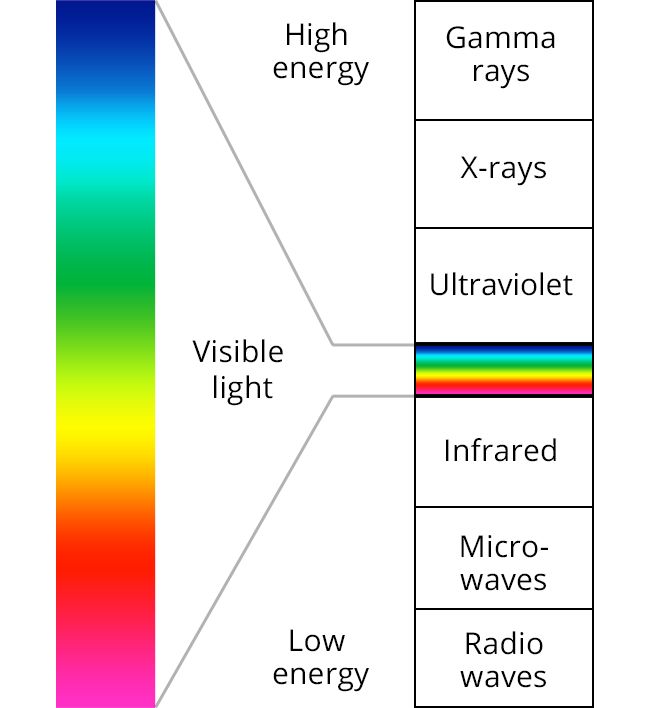UV and sunglasses: How to protect your eyes

You probably know that too much exposure to the sun's ultraviolet (UV) rays can cause sunburn and skin cancer. But did you know UV also can harm your eyes?
Extended exposure to the sun's UV rays has been linked to significant eye problems, including cataracts, macular degeneration, pingueculae, pterygia and photokeratitis.
Protecting your eyes from UV
To protect your eyes from harmful solar radiation, you should wear sunglasses that block 100 percent UV whenever you are outdoors in daylight. Your eyes need protection even on cloudy days because the sun's damaging UV rays can penetrate cloud cover.
Sunglass frames with a close-fitting wraparound style provide the best protection because they limit how much sunlight reaches your eyes from all sides.
What is UV?
While many people refer to ultraviolet radiation as "UV light," this term technically is incorrect because you cannot see UV rays. Ultraviolet radiation is invisible.
There are three categories of UV radiation:
UVC
These are the highest energy UV rays and potentially could be the most harmful to your eyes and skin. Fortunately, the atmosphere's ozone layer blocks virtually all UVC rays.
But this also means depletion of the ozone layer potentially could allow high-energy UVC rays to reach the Earth's surface and cause serious UV-related health problems.
UVC rays have wavelengths that range from 100 to 280 nanometers (nm).
UVB
UVB rays have slightly longer wavelengths (280-315 nm) and lower energy than UVC rays. These rays are filtered partially by the ozone layer, but some still reach the Earth's surface.
In low doses, UVB radiation stimulates the production of melanin (a skin pigment), causing the skin to darken, creating a suntan.
But in higher doses, UVB rays cause sunburn that increases the risk of skin cancer. UVB rays also cause skin discolorations, wrinkles and other signs of premature aging of the skin.
Overexposure to the sun's UVB radiation also is associated with a number of eye problems, including pinguecula, pterygium and photokeratitis ("snow blindness").
SEE RELATED: What is welder's flash?
Because the cornea appears to absorb 100 percent of UVB rays, this type of UV radiation is unlikely to cause cataracts and macular degeneration, which instead is linked to UVA exposure (see below).
UVA
UVA rays are closer to visible light rays and have lower energy than UVB and UVC rays. But UVA rays can pass through the cornea and reach the lens and retina inside the eye.
Overexposure to UVA radiation has been linked to the development of certain types of cataracts, and research suggests UVA rays may play a role in development of macular degeneration.
UV risk factors
Anyone who spends time outdoors is at risk for eye problems from UV radiation. The actual dose of UV radiation you get outdoors depends on a number of factors, including:
Geographic location: UV exposure is greater in tropical areas near the earth's equator. The farther you are from the equator, the smaller your risk.
Altitude: UV exposure is greater at higher altitudes.
Time of day: UV exposure is greater when the sun is high in the sky, typically from 10 a.m. to 2 p.m.
Setting: UV exposure generally is greater in wide open spaces, especially when highly reflective surfaces are present, like snow and sand. In fact, UV exposure can nearly double when UV rays are reflected from the snow. UV exposure is less likely in urban settings, where tall buildings shade the streets.
Medications: Certain medications, such as tetracycline, sulfa drugs, birth control pills, diuretics and tranquilizers, can increase your body's sensitivity to UV radiation.
Measuring ultraviolet rays
In the United States, the risk for UV exposure is measured using the UV Index.
Developed by the NWS and EPA, the UV Index predicts each day's ultraviolet radiation levels on a simple 1 to 11+ scale.
In addition to publishing the UV Index daily, the EPA also issues a UV Alert when the level of solar UV radiation that day is expected to be unusually high.
Sunglasses: your best protection against UV
To best protect your eyes from the sun's harmful rays, always wear good quality sunglasses when you are outdoors.
Look for sunglasses that block 100 percent of all UV rays. Your optician can help you choose the best sunglass lenses for your needs.
To protect as much of the delicate skin around your eyes as possible, try at least one pair of sunglasses with large lenses or a close-fitting wraparound style.
Depending on your outdoor lifestyle, you also may want to explore performance sunglasses or sport sunglasses.
The amount of UV protection sunglasses provide is unrelated to the color and darkness of the lenses.
For example, a light amber-colored lens can provide the same UV protection as a dark gray lens. Your optician can verify that the lenses you choose provide 100 percent UV protection.
In addition to sunglasses, wearing a wide-brimmed hat on sunny days can reduce your eyes' exposure to UV by up to 50 percent.
Children need UV protection, too
The risk of damage to our eyes and skin from solar UV radiation is cumulative — meaning the danger continues to grow the more time you spend in sunlight throughout your lifetime.
With this in mind, it's especially important for kids to protect their eyes from the sun. Children generally spend much more time outdoors than adults.
In fact, some experts say that because children tend to spend significantly more time outdoors than most adults, up to half of a person's lifetime exposure to UV radiation can occur by age 18.
Also, children are more susceptible to eye damage from UV rays because the lens inside a child's eye is clearer than an adult lens, enabling more UV to penetrate deep into the eye.
Make sure your children's eyes are protected from the sun with good quality sunglasses or photochromic lenses when they go outdoors. Also, encourage your child to wear a hat on sunny days to further reduce UV exposure.
Tips about sunglasses and UV exposure
Many misconceptions exist about sun protection for your eyes. Keep these tips in mind:
Not all sunglasses block 100 percent of UV rays. If you're unsure about the level of UV protection your sunglasses provide, take them to your eye doctor or optician for an evaluation. Many eye care professionals have instruments that can measure the amount of UV radiation your lenses block.
Remember to wear sunglasses even when you're in the shade. Although shade reduces your UV and HEV exposure to some degree, your eyes still will be exposed to UV rays reflected from buildings, roadways and other surfaces.
Sunglasses also are important in winter, because fresh snow can reflect 80 percent of UV rays, nearly doubling your overall exposure to solar UV radiation. If you ski or snowboard, choosing the right lenses is essential for adequate UV protection on the slopes.
Even if your contact lenses block UV rays, you still need sunglasses. UV-blocking contacts shield only the part of your eye under the lens. UV rays still can damage your eyelids and other tissues not covered by the lens. Wearing sunglasses protects these delicate tissues and the skin around your eyes from UV damage.
If you have dark skin and eyes, you still need to wear sunglasses. Although dark skin color may give you a lower risk of skin cancer from UV radiation, your risk of eye damage from UV rays is the same as that of someone with fair skin.
READ MORE: Sunglasses Diagram
Start with an eye exam
Before purchasing sunglasses, schedule an eye exam with an eye doctor near you. Even a small amount of refractive error or a small change in your glasses prescription can make a big difference in giving you the clearest, most comfortable vision outdoors.
Everyone enjoys a sunny day. But be safe and make sure you have the right sunglasses to shield your eyes from the sun's harmful UV rays.
SEE RELATED: Sunburned Eyes
Page published on Thursday, March 7, 2019








